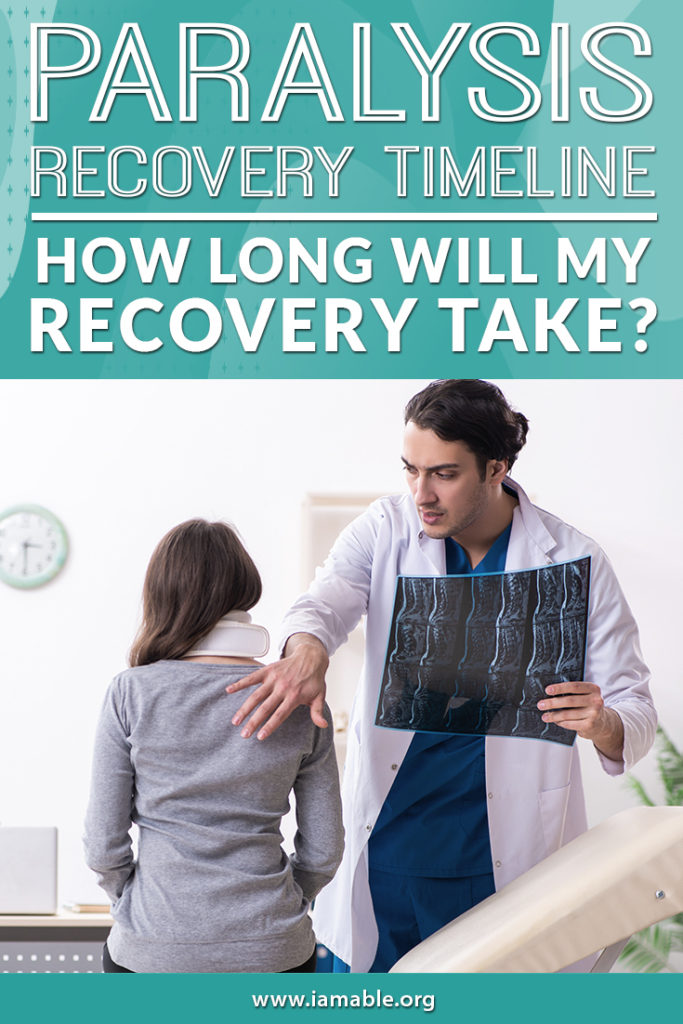Miami, FL 33186

Recovering from paralysis to the greatest extent that you can following an injury or illness is a time-consuming process. You need to have realistic expectations both about how full of a recovery you can make as well as how long your rehabilitation will last. So this is an important question to discuss, even though the answer may not be as specific as you like.
Since paralysis recovery times will differ depending on the cause, we can’t discuss every variable here. For the sake of our discussion, we will mainly consider how long it takes to recover from paralysis after a stroke. Keep in mind that if your paralysis is related to a spinal cord injury, the timeline noted here will be significantly longer, and the amount of mobility that your recovery may vary depending on the location of the injury, the extent of the damage, and the amount of effort you put into your therapy.
First, we need to talk about how a stroke occurs. In its simplest form, a stroke happens when a part of the brain doesn’t receive blood flow for a period of time. As a result, part of the brain can suffer damage. The brain will then make adjustments to compensate for the part of it that has ceased functioning or is no longer working completely. Therapeutic efforts can assist this process to happen as quickly as possible and to restore maximum function. Here is a brief timeline of the recovery process.
The immediate care received after a stroke is crucial in determining how much of the brain survives and whether the patient survives the event. The faster a stroke is identified and treated, the more likely a person is to live and to be able to restore as much function as possible.
The fastest advancement occurs immediately following the stroke when neuroplasticity is at its peak. Therefore, therapy following a stroke should begin as soon as the patient is no longer in mortal danger. In an attempt to self-correct, the brain is already making as many new neural connections as it can, so this immediate therapy is where you will see rapid improvement.
The doctor will encourage stroke patients to get up and walking as soon as possible if you still have the necessary functionality. If not, therapy will include exercises performed sitting up or even lying down. Discharge usually occurs after about a week but may sometimes be longer for a more severe stroke. Next, therapy moves to an outpatient rehab center.
Again, because stroke recovery happens fastest early on, your immediate therapy will be the most intense. For the first six weeks, you may be encouraged to take part in rehabilitation five to six days per week. Some patients may find that this requires an inpatient facility. For most, it will be outpatient. Depending on your circumstances, you may also be able to acquire some in-home sessions of both occupational and physical therapy. That last option is best if you need outpatient rehabilitation but have no way to get to a facility daily on your own.
By the end of your first three months, you will have made most of the recovery that you can expect to make. Again, this is a significant divergence from SCI rehabilitation, where complete recovery can take a year or longer. The exception for stroke patients would be those who experienced damage to the brainstem. This would lead to longer recovery times.
During the next three months, progress slows down. Continued advancement will depend on your determination to stick with therapy and exercise. If you are trying to maximize your independence, you may need the help of friends and family to keep you encouraged, as gains from your efforts may seem to decrease. However, don’t give up all hope. You may be able to continue making progress for up to two years after your stroke.
As you can see from this timeline, you will need patience and persistence to meet your goals of maintaining as much independence as possible. This is true regardless of the cause of your paralysis, and you will need even more patience and motivation if you are recovering from a spinal cord injury. Remember that even the tiniest of improvement is still an improvement, so don’t reduce your efforts.
One help to keep you motivated can our eBook entitled 7 Unbelievably Important Steps to Take to Thrive after Paralysis. Regardless of the underlying cause of your paralysis, this book can help get you started on your recovery journey. From assisting you to get into the right mindset for the challenging journey ahead to teaching you ways to care for yourself mentally and emotionally during your struggle, we hope our book can help you take control of your new circumstances.
If you live in southern Florida and need an outpatient facility for your paralysis rehab, contact iAM ABLE. We use a blend of traditional and technology-based modern therapy methods to help you optimize your outcomes. Give us a call at 305.283.9717 to see if our facility in Miami is the best choice for you. And don’t forget to download our eBook to help prepare you mentally for your rehabilitation journey.
Grab our free e-book 7 Unbelievably Important Steps to Take to THRIVE after Paralysis by clicking the image below.
